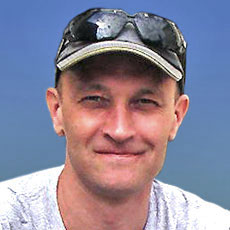Metal Detecting in USA
My Treasure Hunting Stories on Cache Hunting, Coin Shooting and Relic Hunting
NOTE: Not all pages are mobile-friendly yet, but their reconstruction is under way. Please be patient. Thank you for your understanding!
Metal Detecting in USA
by Sergei UpstateNY, last time modified:
As the popularity of this hobby grows in the US, more and more people get involved in treasure hunting activities of all sorts. The prevailing types of metal detecting activities in any particular US region are based on the region's geographical location and historical events that took place there in the past.
For example, coin shooting - the most popular activity in the states, can yield a decent variety of coin finds. They range from the British King George and Colonial coppers, and Spanish silver Reales found in the Northeast and the Mid-Atlantic and the Southeastern states, to the 19th century US gold coinage found at the sites of "ghost towns" and former mining camps in the Southwest. A wide variety of the US silver coinage can be found across America, which also gives unlimited opportunities to the coin cache hunters in every state (see my article - Coin Cache Hunting).
What definitely should be mentioned is the exciting search for the 17th century Spanish silver "Pieces of Eight" (8-Reale coins) and gold Escudos that are scattered on the ocean floor in shallow waters off the Florida Keys and Florida’s Atlantic coast, especially a coastal area stretching from Melbourne to Fort Pierce, known as Florida's "Treasure Coast". Since thousands of the treasure-laden Spanish Galleons sank in the region in the 17th century, they have been an endless source of silver and gold coins and artifacts available for both the underwater treasure hunters and beach/surf hunters especially after each storm replenishes coastal beaches with treasure specie. More info is given in my articles - Underwater Metal Detecting, Shipwreck Diving and Beach Hunting.
Relic hunting - another very popular metal detecting activity in America, also provides a wide variety of relics that can be divided into the following categories: the late-16th century Colonial artifacts on the North-Atlantic coast and along the former fur-trade routes in the Northern states, the 17-18th century Colonial artifacts in the Northeastern, Mid-Atlantic and Southeastern states, relics of the French and Indian War in the Northeast, relics of the Revolutionary War in the Northeast, the Mid-Atlantic and the Southeast, the 1812 War relics found at sites of the former cantonments and military camps in the Northeastern and Western states, relics of the Mexican–American War in the Southern U.S., and relics of the Civil War in the Mid-Atlantic and Southern U.S.
However, land metal detecting in the US is more challenging than, for example, metal detecting in Europe because, unlike any European country, America is fairly young - its history does not go back far. And, unfortunately, urban developments are taking over the "hot" metal detecting spots; thus, compelling many treasure hunters to put more efforts into researching for new potentially productive sites. Nevertheless, treasure hunting in the US is still a lot of fun, especially when you hit a truly "virgin" hunt site.
Fortunately, technology of metal detectors and treasure hunting equipment is improving constantly; thus, giving those treasure hunters who keep up with it an opportunity to unearth more great stuff at the so-called "searched-out" metal detecting sites. However, advanced technology requires a more educated approach on part of a detectorist in order to understand the new Know-How's and properly command them to one's advantage.
For example, in the European countries with thousands of years of history and civilization, many metaldetectorists use just the factory pre-set search programs, hunt without headphones, and still manage to make remarkable finds. In the US, serious treasure hunters have to be more attentive to all aspects of metal detecting in order to get satisfactory results. If you are one of them, you know that development of an optimum search program for particular metal detecting conditions is always the must as well as the usage of headphones. But of course, one does not have to be very patient, creative, industrious, and persistent to have just "any-metal" detecting fun on weekends.
And finally there are two exciting metal detecting activities - gold nugget hunting and meteorite detecting, which the American South-West readily offers, and most European countries do not. These activities are easier to master than, for instance, coin shooting or coin cache hunting at the Colonial sites, and the gold- and meteorite-bearing areas will never be depleted of natural and extraterrestrial treasures. So, there are still many doors open for the hobby enthusiasts and professional treasure hunters in the US!
The above-listed webpages contain metal detecting stories and pictures from my treasure hunting experiences in Upstate New York as well as at other locations in the USA. You will see and read about the unique items I found, and the techniques I used to locate them. There is a lot to this wonderful hobby, and from these stories you will learn some new ideas and tips that will help you successfully detect in your own locations.
If you like metal detecting at sites of former homesteads hidden in remote areas, you might be interested in reading my Article - How To Metal Detect Around Cellar Holes Successfully
